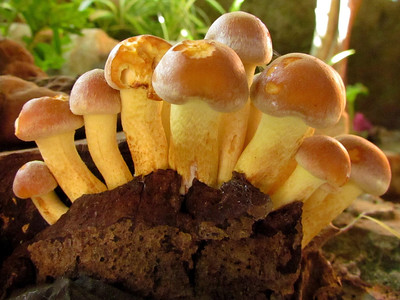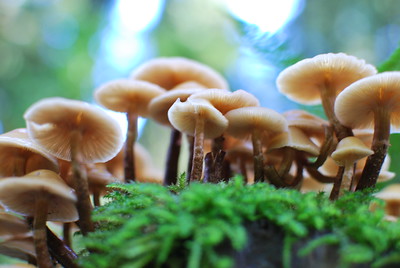Growing Mushrooms in Greenhouse: Planting mushrooms in greenhouse. Start by setting up growing trays inside the greenhouse system.
Materials for building the greenhouse system – This can be done in a variety of different ways, including repurposing an old greenhouse, using materials found at a hardware store, or even by purchasing growing trays that are used for plants. How To Grow Mushrooms in Greenhouse?
Table of Contents
Growing Mushrooms in Greenhouse Full Guide
Mushrooms are a fungus species, and fungi include molds, crusts, and more developed forms with a stalk and a cap. Fungi are different from plants in that they lack chlorophyll, the green pigment that allows plants to produce sugar from sunlight. They also want to absorb their nutrients from the surroundings in which they grow.
Mushrooms are a form of fungus that, like certain plants, can be cultivated in greenhouses. Mushrooms, unlike most plants, do not require sunlight to flourish. In fact, mushrooms thrive best in cool, dark environments.
If you have the ability to create an environment like this in your greenhouse or if you can make minor modifications to create one, you may be able to cultivate your own mushrooms.
Materials For Building The Greenhouse System
This can be done in a variety of different ways, including repurposing an old greenhouse, using materials found at a hardware store, or even by purchasing growing trays that are used for plants.
Mushrooms are typically grown on organic matter such as straw, coffee grounds, sawdust, cottonseed hulls and other compostable material. You can use this type of medium to grow mushrooms indoors; if you find it difficult to obtain organic matter in large quantities (or cost-effectively), try substituting with an alternate medium like perlite or vermiculite.

To start growing mushrooms in your greenhouse, first you need to acquire your desired mushroom species spores. A company that specializes in mushroom spores can provide you with a growing kit that includes all of the necessary ingredients to begin cultivating your crop.
Prepare Your Greenhouse for Growing Mushrooms Now you are ready to prepare your greenhouse. Place your mushrooms on trays, or grow bags, inside the greenhouse, making sure they are at least 3-4 inches from each other so there is ample room for airflow.
If you do not have ventilation in your greenhouse, create an opening by cutting a few slits into the top of the greenhouse cover and covering them with screen or plastic mesh to keep out pests. You want air but not too much that it dries out the mushrooms’ environment. During this early growth stage (called “spawn run”), the mushrooms will be grown on a layer of sterilized straw.
Spawn Run
A few weeks after your mushroom spawn is introduced into the growing medium, it will develop into ourcelium (the vegetative part of the fungus). This part of the process is called “spawn run” and can take anywhere from four to 12 weeks.
Check on your crop regularly but do not disturb them by touching or disturbing them too much during this time. As long as they are getting enough humidity and ventilation, they should develop properly.
Mushrooms need high relative humidity-between 90% and 95%. Like most plants, they also require water to survive. Mist the inside walls of your greenhouse with occasionally throughout these first few months of growing mushrooms. The mycelium will begin to grow and turn into mushroom roots. When these “mycelial cords” pop out, the mushrooms are ready for a more advanced stage of growth.
Casing
Once your mushrooms have begun to form, they require a nutrient-rich environment that they can absorb from to continue their development process.
This is called “casing” and consists of peat moss or another rich organic substrate that is mixed with vermiculite. Use this mixture as a layer on top of the straw where you had been growing your mushrooms during spawn run.
Harvesting Mushrooms
Proper timing when harvesting your crop is one key to success in mushroom farming. Mushrooms are typically harvested as they open, but as some mature faster than others, it can be difficult to time the harvesting process.
Some people prefer to harvest them when they have reached their full color and only then; others only pick off a few of the larger mushrooms after first picking off smaller ones on a more frequent basis.
Once your mushroom crop is ready for consumption, make sure you handle them with care. You want to ensure that you do not damage the mycelium or roots. Otherwise, there is a good chance that your fungus will start growing mold, which will require more maintenance from you through watering and/or heat treatment.
As noted above there are many different ways to cultivate mushrooms in indoor greenhouses provided the right conditions are created. One of the most popular methods is the “bag” method where styrofoam cups (or bags) filled with agricultural substrate, like straw or hay, are inoculated with spores and left to grow.
Once the mushroom mycelium has colonised the entire volume of substrate it can be used to spawn new stages of growth for larger volumes of substrate (up to 4 cubic metres).
Sterile Culture
A more advanced technique that provides higher yields is called “sterile culture” which involves more sterile equipment like laminar flow hoods and glove boxes.
With sterile culture techniques an advanced grower can cultivate large quantities of mushrooms indoors very quickly; spawning cakes / logs with grain spawn within-15 days followed by several flushes of mushrooms.

How to grow Pumpkin Seed: Germination, Time, Temperature, Process & more
Chamber Growing
An alternative method to the above is using a “chamber growing” technique, which does not require preparing agricultural substrate but instead only requires the addition of water and lighting. Mushrooms like shiitake and oyster can be grown this way and it has been adapted into an open-source project that provides resources for innovators in mushroom farming technology.
With all of these indoor techniques, temperature control is critical during both spawn run (when the mycelium is developing) as well as casing stages where mushrooms are harvested. Further information on properly controlling temperature can be found here: Temperature Control . If you plan to grow indoors commercially, check out the resources below or contact us for more information regarding equipment and support.
In the past, many people were skeptical about growing mushrooms with hydroponics since it is a relatively new method of mushroom cultivation. In addition to sustainability, another benefit to using this method as opposed to traditional techniques is that you can grow more per square foot of land which means less time spent on maintenance and no need for agricultural substrate used above-ground.
Hydroponic Technology
With hydroponic technology, the mycelium can be grown in a liquid suspension rather than an agricultural substrate. Experiments have shown that yields from liquid suspensions tend to match those from above ground soils so if you are already familiar with growing plants in a hydroponic system there is no reason why you cannot incorporate mushroom into your collection of greenhouses or indoor growing spaces.
One final note about indoor cultivation methods is that, while the above methods may provide you with a substrate to grow on, if you want to grow conventional mushrooms like portobello or button mushrooms then you will need to add nutrients and mix soil into your substrate. Once your mycelium has colonised the whole volume of substrate it can be used for spawn runs to create new substrates from which mushroom yields can be produced.
Further information regarding hydroponic cultivation techniques can be found here: Hydroponics . If you plan to use this method commercially check out the resources below or contact us for more information regarding equipment and support.
LED Technology
One final technique we’d like to mention in relation to growing indoors is vertical farming. This technique is still in its development phase but with the advancements in LED technology, the cost of LED fixtures used for indoor farming has dropped to a point where they can now be an affordable option for commercial growers.
A recent article by Mother Earth News gives a good overview of this technique if your looking to start growing vertically indoors.
If you are interested in incorporating our products into vertical or other types of indoor cultivation techniques check out some articles below or contact us directly for more information about how we can help make your grow successful.
Growing Mulberry Fruit Trees: Care, Description, Uses, & Major Species
